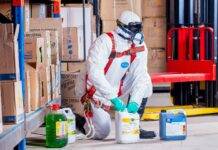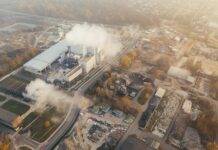
Chemical Engineer Safety Aspects
Chemical engineering is a field that plays a pivotal role in various industries, ranging from pharmaceuticals to manufacturing. However, with great opportunities come great responsibilities, especially concerning safety. In this article, we’ll delve into the critical aspects of safety in chemical engineering, from understanding occupational hazards to implementing effective safety measures.
Importance of Safety in Chemical Engineering
Safety in chemical engineering is paramount, primarily for two significant reasons: safeguarding human lives and health, and ensuring environmental protection. The nature of chemicals and processes involved in chemical engineering poses inherent risks, making safety protocols essential for preventing accidents and minimizing their impact.
Human Lives and Health
The well-being of workers in chemical engineering industries is of utmost importance. Exposure to hazardous chemicals, physical hazards like high temperatures or pressure, and potential accidents during manufacturing processes can lead to severe injuries or even fatalities if proper safety measures are not in place.
Environmental Protection
Chemical engineering processes can also have adverse effects on the environment if not managed correctly. Spills, leaks, or emissions of harmful substances can contaminate air, water, and soil, posing risks to ecosystems and public health. Implementing robust safety practices not only protects workers but also mitigates environmental risks.
Occupational Hazards in Chemical Engineering
Chemical engineers face various occupational hazards daily, including chemical exposure, physical hazards, and risks associated with the processes themselves.
Chemical Exposure
Working with hazardous chemicals exposes chemical engineers to the risk of inhalation, ingestion, or skin contact with toxic substances. Long-term exposure can lead to chronic health issues such as respiratory problems, dermatitis, or even cancer.
Physical Hazards
Chemical engineering environments often involve high temperatures, pressure, and machinery, increasing the risk of burns, cuts, or crushing injuries. Additionally, slips, trips, and falls are common hazards in manufacturing facilities.
Process Safety Risks
The inherent complexity of chemical processes introduces risks such as equipment failure, runaway reactions, or fires and explosions. These incidents can have catastrophic consequences, highlighting the importance of robust process safety management.
Safety Measures in Chemical Engineering
To mitigate the risks associated with chemical engineering, various safety measures must be implemented, focusing on personal protective equipment (PPE), engineering controls, and administrative controls.
Personal Protective Equipment (PPE)
PPE such as goggles, gloves, respirators, and protective clothing forms the first line of defense against chemical exposure and physical hazards. Proper selection, usage, and maintenance of PPE are crucial for ensuring effectiveness.
Engineering Controls
Engineering controls involve designing and implementing safety features directly into processes and equipment to minimize risks. Examples include ventilation systems, pressure relief valves, and interlocks to prevent accidents.
Administrative Controls
Administrative controls encompass safety policies, procedures, and training programs aimed at reducing risks through effective management and communication. Regular safety audits and inspections help ensure compliance and identify areas for improvement.
Safety Regulations and Standards
Regulatory bodies such as the Occupational Safety and Health Administration (OSHA) and the Environmental Protection Agency (EPA) enforce safety regulations and guidelines specific to chemical engineering industries.
OSHA Regulations
OSHA sets standards for workplace safety, including permissible exposure limits (PELs) for hazardous chemicals, requirements for process safety management (PSM), and guidelines for emergency response planning.
EPA Guidelines
The EPA regulates environmental aspects of chemical engineering, such as wastewater discharge, air emissions, and hazardous waste management, to minimize pollution and protect natural resources.
International Standards
International organizations like the International Organization for Standardization (ISO) develop and publish standards for quality, safety, and environmental management systems applicable to chemical engineering globally.
Safety Training and Education
Continuous safety training and education are essential for ensuring that chemical engineers are equipped with the knowledge and skills needed to identify hazards, respond to emergencies, and adhere to safety protocols effectively.
Continuous Learning
Staying updated on advancements in safety practices, technologies, and regulations through seminars, workshops, and professional certifications is crucial for maintaining a culture of safety excellence.
Simulation and Scenario Training
Simulating real-life scenarios and conducting emergency response drills help prepare chemical engineers for handling unexpected situations, improving their response time and decision-making under pressure.
Risk Assessment and Management
Effective risk assessment and management are fundamental to identifying potential hazards, evaluating their severity and likelihood, and implementing appropriate controls to mitigate risks.
Hazard Identification
Conducting thorough hazard assessments involves identifying potential sources of harm, such as hazardous chemicals, equipment failures, or human error, and evaluating their impact on safety.
Risk Evaluation
Once hazards are identified, assessing their risk involves considering factors such as the probability of occurrence, the potential severity of consequences, and existing control measures’ effectiveness.
Risk Control
Implementing risk control measures may include engineering modifications, procedural changes, or administrative controls to eliminate or reduce identified hazards to an acceptable level.
Emergency Response Planning
Preparation for emergencies is crucial for minimizing the impact of incidents and ensuring the safety of personnel, the public, and the environment.
Incident Response Teams
Establishing dedicated teams trained in emergency response procedures and equipped with the necessary resources facilitates prompt and coordinated actions during crises.
Evacuation Procedures
Developing and practicing evacuation plans tailored to specific chemical engineering facilities ensures orderly and efficient evacuation in case of emergencies such as fires, chemical releases, or natural disasters.
Communication Protocols
Establishing clear communication channels and protocols for alerting personnel, coordinating response efforts, and liaising with emergency services enhances overall preparedness and response effectiveness.
Continuous Improvement in Safety Culture
Fostering a culture of safety requires ongoing efforts to learn from incidents, implement feedback loops, and prioritize safety in all aspects of organizational operations.
Learning from Incidents
Conducting thorough incident investigations, sharing lessons learned, and implementing corrective actions contribute to a culture of continuous improvement and proactive risk management.
Implementing Feedback Loops
Encouraging open communication, soliciting feedback from employees, and addressing safety concerns promptly foster a sense of ownership and accountability for safety among all stakeholders.
Challenges in Implementing Safety Practices
Despite the benefits of safety practices, several challenges hinder their effective implementation, including cost considerations and resistance to change.
Cost Considerations
Investing in safety measures may incur upfront costs, such as purchasing PPE, upgrading equipment, or implementing new technologies, which can strain budgets and require careful financial planning.
Resistance to Change
Resistance from management or employees accustomed to existing practices, fear of disruption, or misconceptions about safety requirements can impede efforts to implement new safety initiatives.
Safety is a critical aspect of chemical engineering, encompassing various measures to ensure the well-being of both personnel and the environment. Here are some key safety considerations in chemical engineering:- Hazard Identification and Risk Assessment: Chemical engineers must thoroughly identify potential hazards associated with the chemicals, processes, and equipment involved in their work. This includes assessing the likelihood and consequences of accidents.
- Process Safety Management (PSM): PSM involves implementing systems and procedures to prevent catastrophic accidents such as explosions, fires, and releases of hazardous substances. This includes elements such as process hazard analysis, operating procedures, training, and emergency planning.
- Engineering Controls: Engineers use various engineering controls to mitigate risks, including designing equipment and processes with built-in safety features, such as pressure relief valves, containment systems, and automated shutdown systems.
- Personal Protective Equipment (PPE): Chemical engineers and other personnel working with hazardous materials must use appropriate PPE, such as gloves, goggles, respirators, and protective clothing, to minimize exposure to hazards.
- Chemical Handling and Storage: Proper handling and storage of chemicals are essential to prevent spills, leaks, and other accidents. This includes following correct procedures for transporting, transferring, and storing chemicals, as well as ensuring compatibility between chemicals and containers.
- Emergency Response: Chemical engineers should be trained in emergency response procedures and be prepared to respond effectively to accidents or incidents, including implementing evacuation plans, controlling spills, and administering first aid.
- Regulatory Compliance: Chemical engineers must stay abreast of relevant safety regulations and standards, ensuring that their designs and operations comply with legal requirements aimed at protecting workers, the public, and the environment.
- Process Monitoring and Maintenance: Regular monitoring and maintenance of equipment and processes are essential to identify and address potential safety hazards before they escalate into incidents.
- Training and Education: Providing comprehensive training and education to chemical engineers and other personnel is crucial for fostering a safety culture within an organization. This includes training on safety procedures, hazard recognition, and emergency response.
- Continuous Improvement: Chemical engineers should continually evaluate and improve safety performance through incident investigation, safety audits, and feedback mechanisms, aiming for a proactive approach to safety management.
By integrating these safety aspects into their work, chemical engineers can help ensure the safe and responsible operation of chemical processes and facilities, protecting both people and the environment from harm.Conclusion
In conclusion, safety is a fundamental aspect of chemical engineering that must be prioritized to protect human lives, safeguard the environment, and ensure sustainable operations. By understanding occupational hazards, implementing effective safety measures, complying with regulations, and fostering a culture of continuous improvement, chemical engineers can navigate risks and contribute to safer workplaces and communities.
Chemical Hygiene in Laboratories: Promoting Safe Handling and Storage Practices
Chemical Handling: Storage and Personal Protective Equipment (PPE)
Chemical Exposure Monitoring: Air Sampling and Analysis
Chemical Spill Response: Containment and Cleanup
Hazardous Materials Transportation: Compliance and Emergency Response
FAQs
- Why is safety important in chemical engineering? Safety is crucial in chemical engineering to protect workers from hazards, prevent accidents, and minimize environmental impact.
- What are some common occupational hazards in chemical engineering? Common hazards include chemical exposure, physical hazards like high temperatures or pressure, and risks associated with complex processes.
- What are some challenges in implementing safety practices in chemical engineering? Challenges include cost considerations, resistance to change, and the need for ongoing education and training.
























